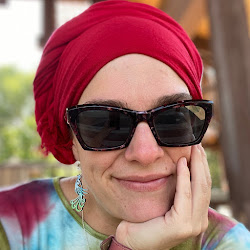Before we purchased this couch, we invested in Torah.
This week's parshah (Torah portion) is Terumah, in which HaShem commands us to build the Mishkan, the portable sanctuary and dwelling place, as the Israelites travel through the desert. The Mishkan became the Holy Temple, and after the Second Temple fell in 70 CE, the Jewish home became the central dwelling place for HaShem.
Driving down any street where new construction is going up you'll see the shells of homes under construction. We start with the bones of a building and construct it inward, with the knickknacks, drapes, color combinations, bookshelves, and family photos all coming in at the end stages of construction.
In this week's parshah, however, we see that the first aspect of construction was the ark -- the resting place of Torah -- and then come the various vessels, the walls, and finally the framework.
What does it all mean? Why do we build our homes hafuch? (That's the name of a popular take on coffee in Israel, which just means upside down or inside out.)
When we build a home, we must place Torah at the center of everything before we begin to build anything else. Before we pick out towel colors or bathroom mats, before we pick out a couch or decide on plate patterns, Torah must have been placed at the center of the relationship.
If anything, Mr. T and I placed Torah on the ground floor of our relationship before building or exploring the everyday, seemingly monotonous aspects of our future together. Can you imagine first dates talking seriously and passionately about tzedakah and minhagim (traditions)? With a Torah-based marriage, you're setting yourself up for a dwelling place for the shechinah (the presence of HaShem). Until the Holy Temple is rebuilt, the Jewish home is the best and most important way we can express our dedication to HaShem, Am Yisrael, and, ultimately, each other.
So, what do you think about it?







